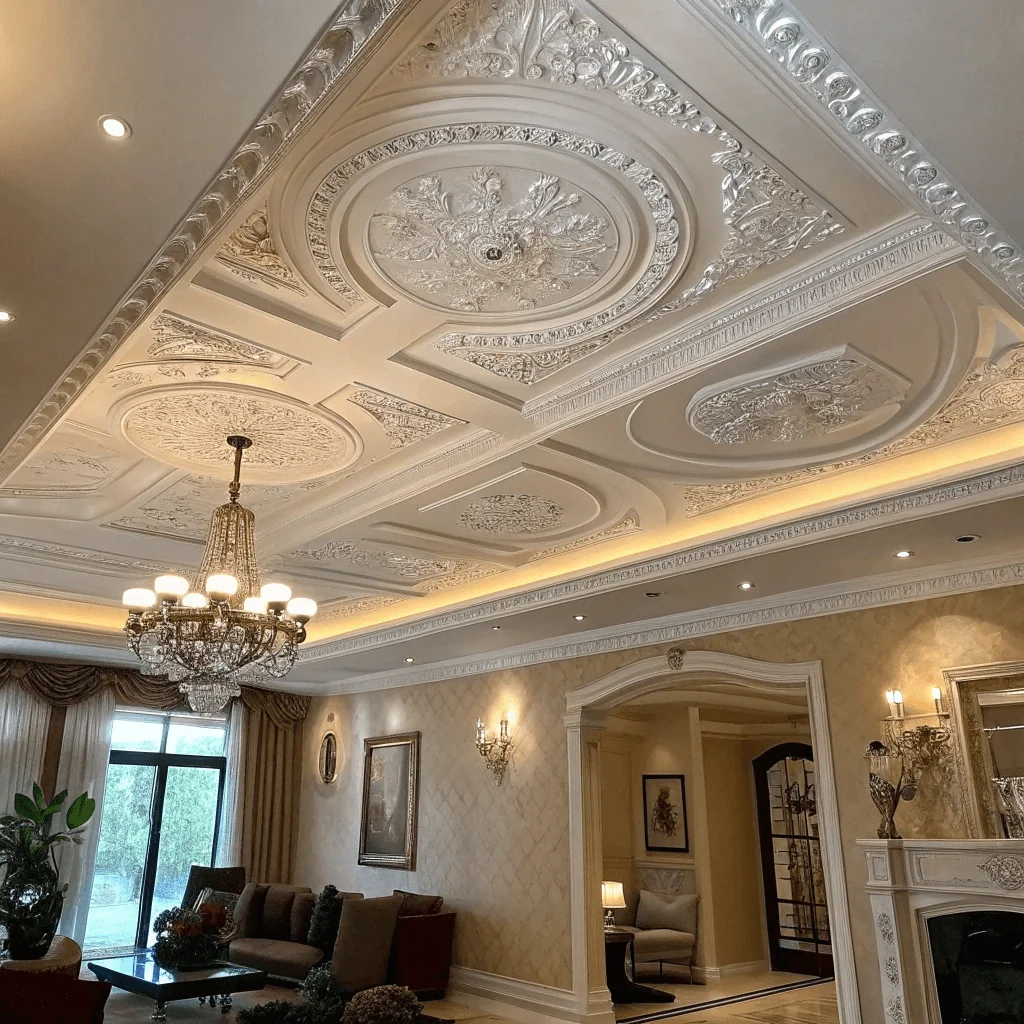Plaster coving is a timeless architectural feature that can instantly elevate the aesthetic of any room. Whether you’re renovating a heritage property or adding a touch of elegance to a modern home, the right plaster coving can create a seamless transition between walls and ceilings while adding character and sophistication. In this blog, we explore ten stunning plaster coving ideas that can transform your home, using Australian spelling and design trends.
Classic and Elegant: Traditional Cornice Coving
Traditional Plaster Coving with intricate detailing is perfect for homeowners who want to bring a classic and refined look to their interiors. These cornices often feature floral motifs, egg-and-dart patterns, or acanthus leaves, adding ornate charm to living rooms, dining areas, and bedrooms. They work beautifully in homes with high ceilings and period features, enhancing the architectural integrity of the space.
Minimalist and Modern: Clean Lines and Simple Profiles
For those who prefer a sleek, contemporary aesthetic, minimalist plaster coving with clean lines and understated profiles is an excellent choice. This style offers a subtle yet effective way to frame the ceiling without overpowering the room. It suits modern homes with open-plan layouts and complements minimalist décor styles, making the space feel polished and cohesive.
Cove Coving: Smooth and Curved Elegance
Cove coving features a smooth, concave curve that softly transitions between the wall and ceiling. This design is versatile, working well in both traditional and modern interiors. Its gentle shape adds a touch of softness and elegance, creating an inviting atmosphere in spaces like bedrooms, lounges, or even hallways.
Step Coving: Adding Depth and Dimension
Step coving incorporates multiple layers or steps in its design, providing depth and architectural interest. This style can help define a room’s proportions and add visual texture to plain ceilings. Step coving works well in formal areas such as dining rooms or home offices, where you want to create a sense of sophistication and structure.
Victorian-Inspired Coving: Bringing History to Life
Victorian plaster coving is renowned for its ornate, elaborate designs, often featuring floral patterns, rosettes, and other decorative flourishes. Installing Victorian-style coving can instantly transport your home back in time, adding grandeur and a historical touch. It’s ideal for period homes or anyone wanting to create a vintage-inspired interior that feels warm and luxurious.
Art Deco Coving: Glamour and Geometric Flair
For a touch of 1920s glamour, Art Deco plaster coving offers bold geometric patterns and sharp angles. This style brings a unique character to a room, combining elegance with an artistic edge. Art Deco coving pairs beautifully with metallic accents, rich colours, and luxe furnishings, perfect for statement rooms like living areas or feature hallways.
Ornate Cornices with Ceiling Roses
Pairing ornate plaster coving with a matching ceiling rose can create a dramatic and visually captivating ceiling feature. Ceiling roses work well with chandeliers or pendant lights, drawing the eye upward and enhancing the room’s overall ambiance. This combination is popular in formal dining rooms, grand entrance halls, and traditional living spaces.
Large-Scale Coving for High Ceilings
In rooms with particularly high ceilings, large-scale plaster coving can balance the proportions and add a sense of intimacy. Oversized coving designs can incorporate bold patterns or stepped layers, helping to fill the vertical space while maintaining elegance. This approach is especially appealing in regions such as those with a high cost of living in New Jersey, where homeowners often look for upgrades that add long-term value without requiring full-scale renovations.
Textured and Patterned Coving
Textured plaster coving introduces subtle surface details that can add depth without overwhelming the décor. Patterns such as rope twists, beading, or fluting can give your coving a bespoke feel. This style is ideal for homeowners who want something different but understated, adding interest that complements a variety of interior themes.
Mixing Materials: Plaster Coving with Timber or Metal Accents
For a modern twist, consider combining traditional plaster coving with timber or metal elements. This mix of materials can create a striking contrast that blends old-world charm with contemporary design. Timber beams or metal trims paired with plaster coving work especially well in industrial, rustic, or eclectic interiors, adding texture and warmth to the space.
Conclusion
Plaster coving is a versatile and beautiful feature that can dramatically transform your home’s interior. From classic Victorian cornices to minimalist modern designs, the range of styles available ensures there’s a perfect option for every taste and space. Whether you want to add elegance, texture, or architectural interest, stunning plaster coving ideas offer endless possibilities to enhance your walls and ceilings.
By carefully selecting the right coving style, you can elevate your home’s design, increase its value, and create an inviting atmosphere that impresses guests and delights residents alike. If you’re considering an interior update, plaster coving might just be the detail that takes your home to the next level.
